Akrotiri of Thira
Introduction
The tour of the archeological site of Akrotiri is a trip back in time for every visitor. Buildings and objects trapped under thick volcanic material remained intact or left their imprint.
Akrotiri is one of the most important prehistoric settlements of the Aegean. The settlement was one of the major cities and ports of the Aegean during the Middle and Late Bronze Age (20th-17th century B.C.). It was a crowded city of 20 acres with a remarkable social structure, public roads, sewerage, sanitary engineering, and multi-story buildings.
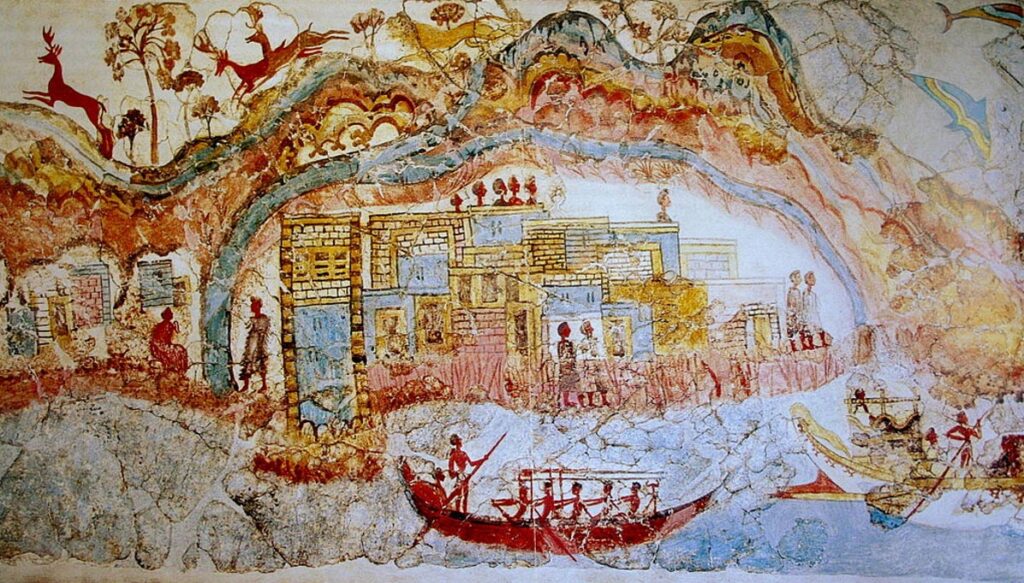
The town’s life ended abruptly in the last quarter of the 17th century B.C. when the inhabitants were obliged to abandon it due to severe earthquakes. The eruption followed. The volcanic materials covered the entire island and the town itself. These materials, however, have protected the buildings and their contents up to date, just like in Pompei.
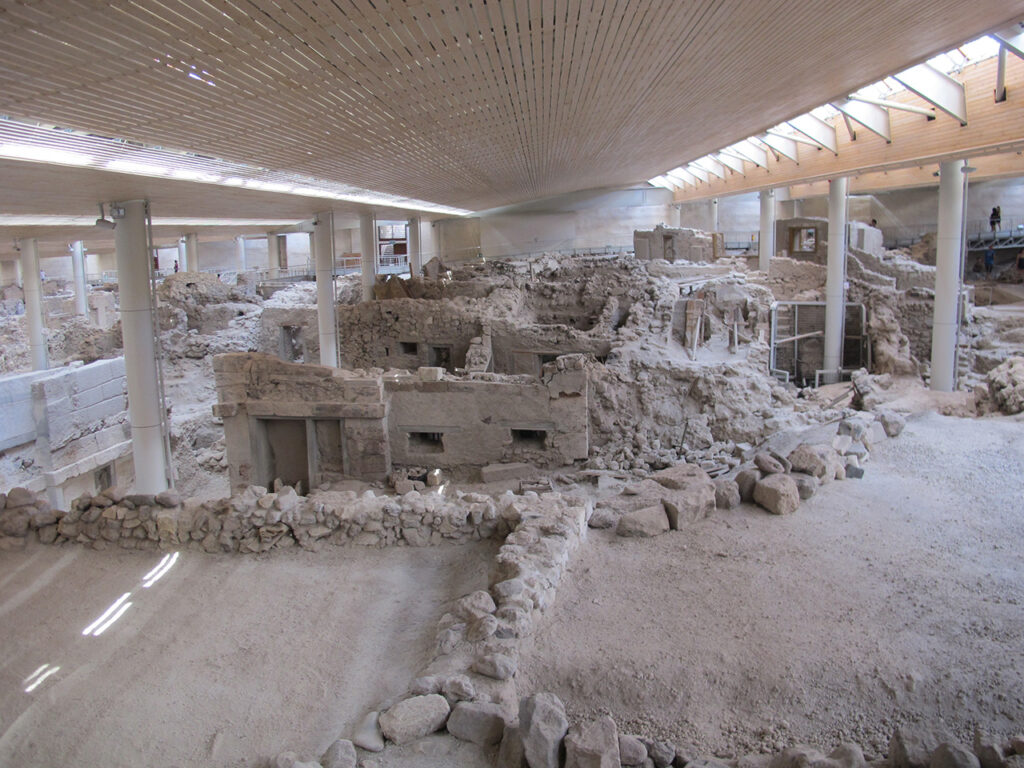
The absence of human skeletons on the site proves that the inhabitants had time to abandon the settlement. They probably abandoned the island as well. Perhaps the disaster caught them gathered in an open space or the port, trying to save themselves and their belongings.
It seems that the departure took place in an organized and systematic way. The old walls collapsed. Piles of stones were gathered in areas where they would not obstruct circulation, ready to be reused. The big vessels were placed under the doorways so that they would be well protected. The desire and the hope to return were apparent. The valuable objects were left with the inhabitants who abandoned the town.
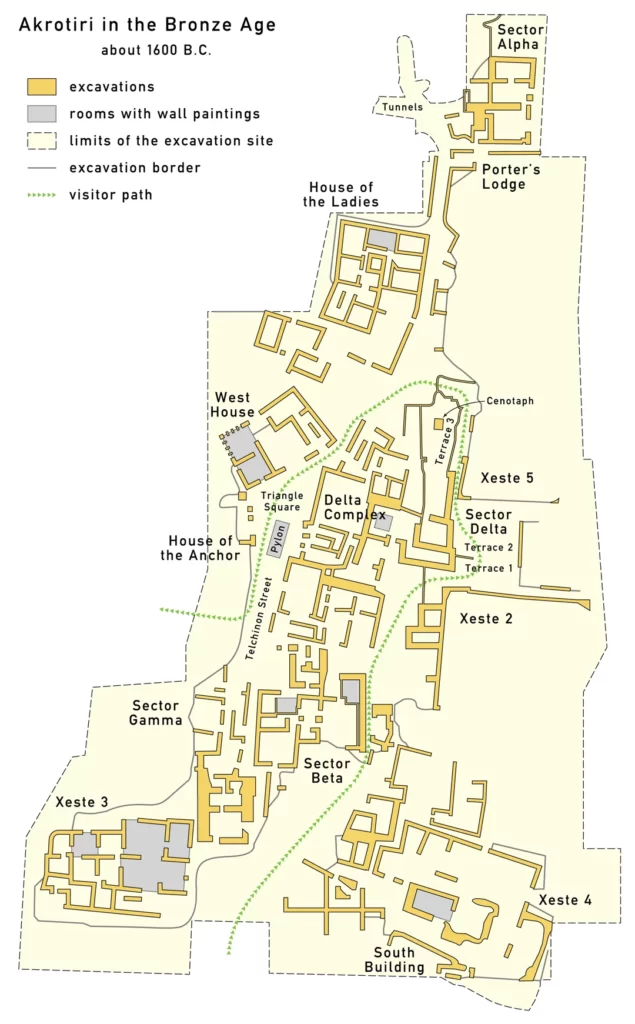
The buildings of Akrotiri are a unique example of impressive architecture—magnificent structures with carved facades housed communal services. Private houses included workshops and warehouses besides the rooms for the family. The building materials came from the island or were imported from other areas. Stone from the quarries of Thira was the primary building material. Pebbles and gravel were collected and used for walls and floors. Valuable timber from Crete was used for wooden frameworks in the walls, providing antiseismic reinforcement. Slabs of plaster from Knossos quarries were placed on the floor over a layer of crushed purple shells. Know-how and good taste were evident in every activity.
Five thousand vessels of various types and sizes, tools, figurines, ritual objects, and furniture that came to light during the excavations testify to the significant development of the settlement. Food leftovers and bones of animals help us reconstruct the nutritional habits of the inhabitants. Impressive frescoes, the oldest samples of monumental painting in the Hellenic world, decorated almost all the building complexes, providing us with valuable information about the society of Akrotiri through their narrative character.
Various imported materials and objects prove the relationships and contact of Akrotiri with Minoan Crete, the Dodecanese, Cyprus, Continental Greece, Egypt, and Syria.
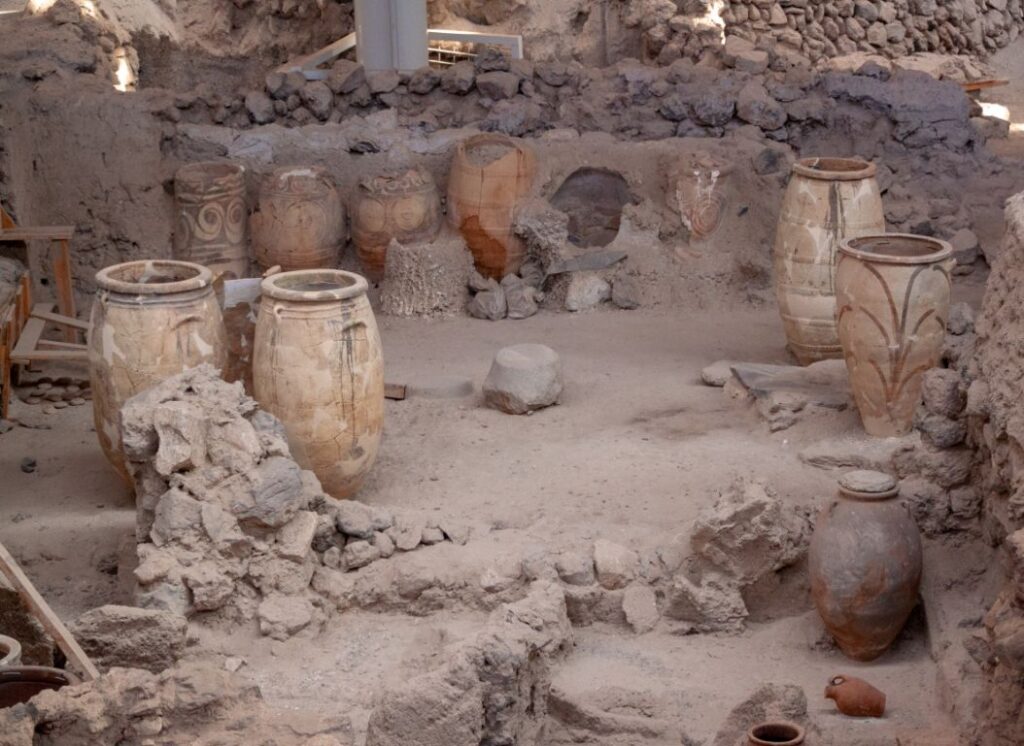
Fun Facts About Akrotiri
Akrotiri is called the ‘Greek Pompeii’ because the site was covered in volcanic ash. And, like its Italian namesake, a charred bed was also recovered by archaeologists. This and several frescoes and other artifacts are displayed in the Akrotiri of Thera Room in the National Archaeological Museum in Athens.
Where is Akrotiri?
The archaeological site of Akrotiri is directly south of the modern-day village with the same name, at the southwestern part of the crescent-shaped island of Thíra, the largest island in the Santorini archipelago.
How to Get to Akrotiri?
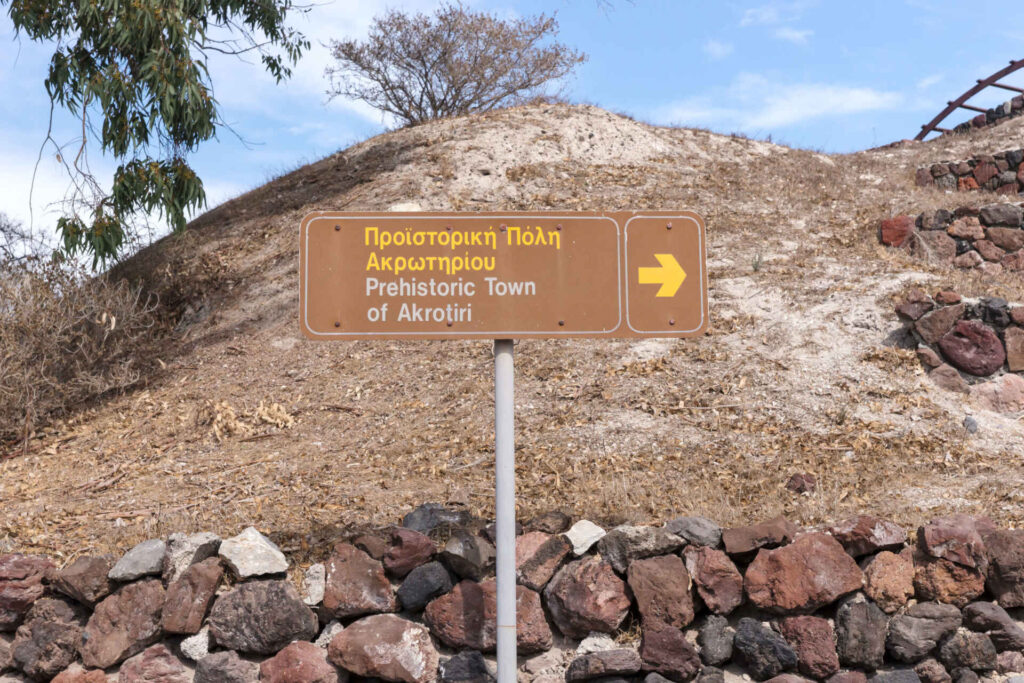
Akrotiri is easy to drive to if you have a rental car. But having a car for your stay is not essential. Some of the guided tours recommended on this page and detailed elsewhere include a transfer from your hotel/holiday accommodation. Also, public transport on the island is excellent.
There are regular buses from Fira (the central bus station for the island) to the car park at Akrotiri Red Beach throughout the week. From there, it is about a 250-meter walk to the archaeological site. From Fira to the Red Beach car park takes about 20 minutes and costs around €2 for an adult.
It is also possible to get off the bus at the village of Akrotiri and follow the well-signposted path to the archaeological site. For further details on prices and timetables for buses to Akrotiri and Red Beach, check the public buses’ KTEL Santorini website.
Visiting Akrotiri
Opening Hours
1 November – 31 March
08h00 to 15h00, Tuesday to Sunday
4 April – 31 October
Daily 08h00 to 20h00
Thursdays 08h00 to 15h00
Monday: Closed
Ticket Prices
Full €12, Reduced €6
Combined Ticket
Full €14, Reduced €7
A 4-day ticket is for archaeological Sites and museums in Thera: Ancient Thera, Akrotiri, Archaeological Museum, Museum of Prehistoric Thera, Collection of Icons and Ecclesiastical Artefacts at Pyrgos.
Beaches at Cape Akrotiri
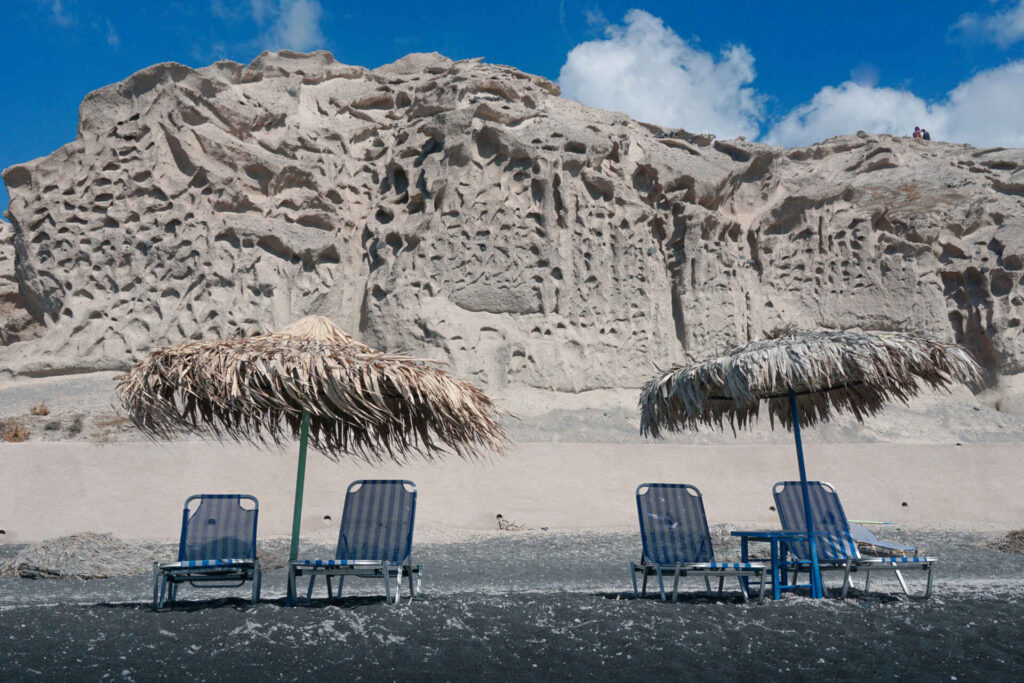
There are a couple of beaches around the Akrotiri Excavations. Some beaches are difficult to reach without amenities but have beautiful views. Other beaches around Akrotiri are pretty luxurious. You will even find some beaches at the Caldera.










